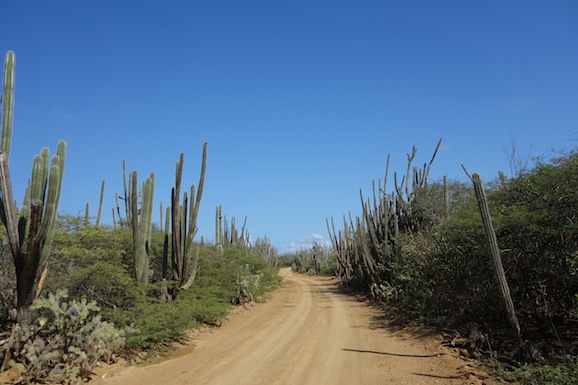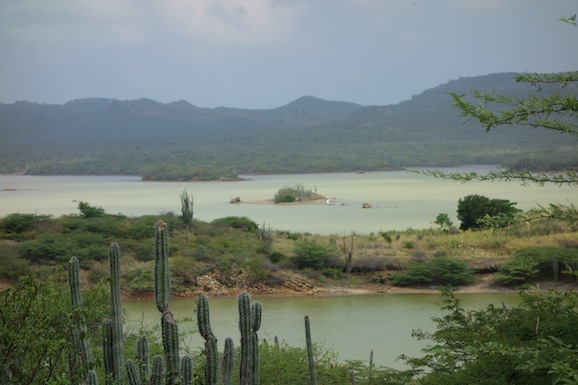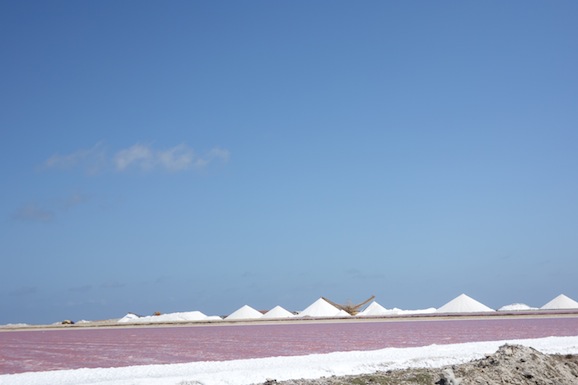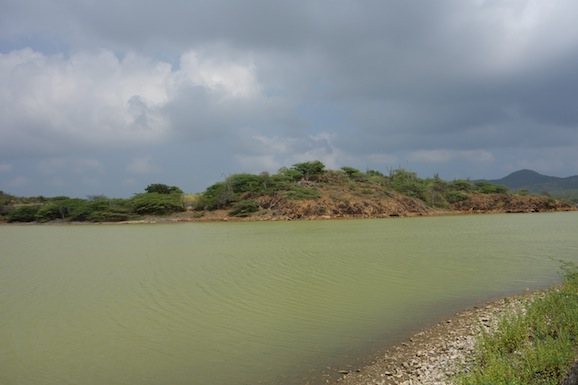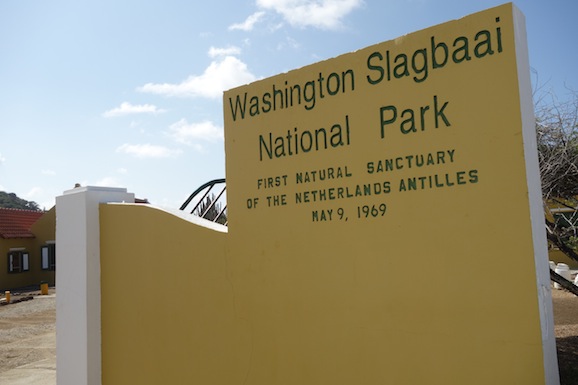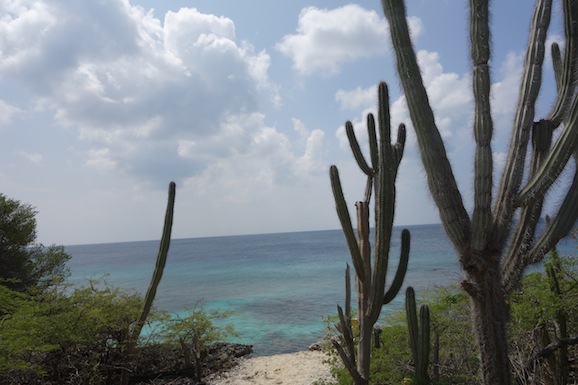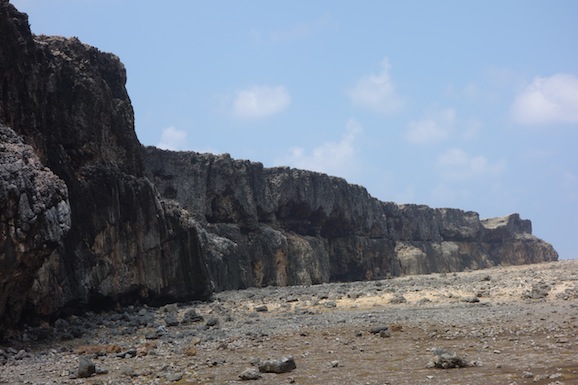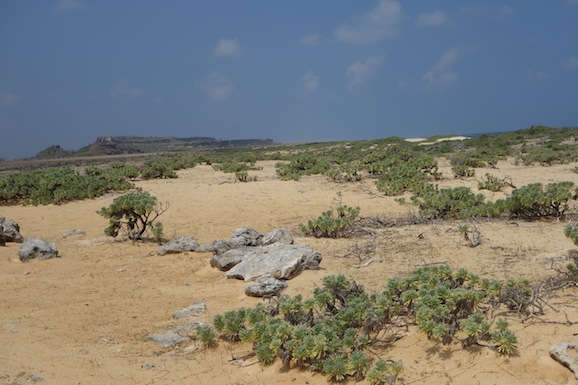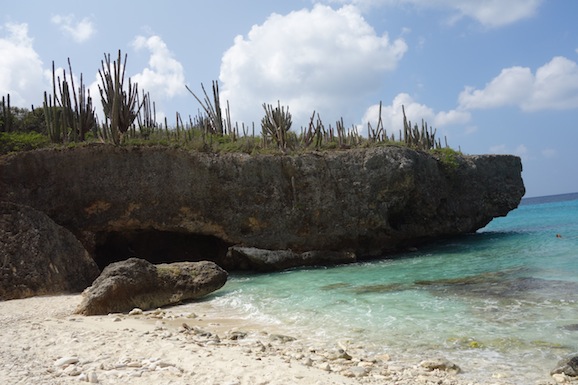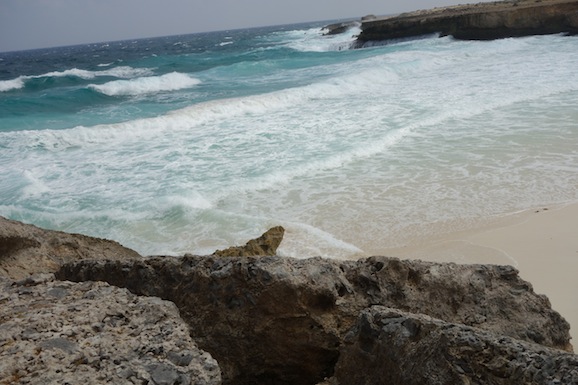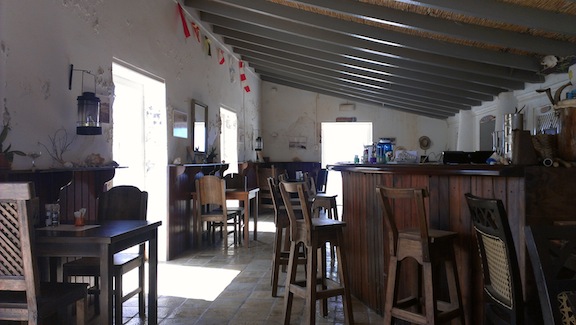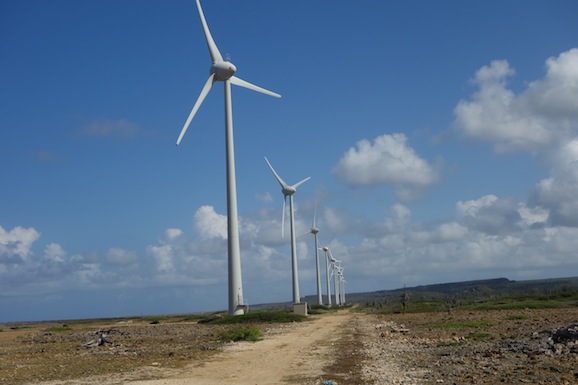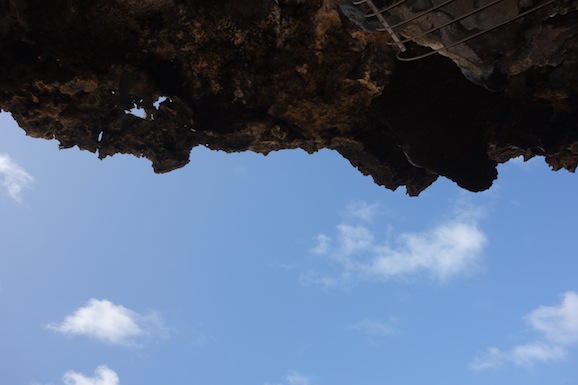Above: Washington Slagbaai National Park (All photos by CJ)
By Alexander Britell
BONAIRE —THE TOWERING ROCK formations, cacti and unfamiliar terrain may suggest otherwise, but the northwestern corner of Bonaire is very much in the Caribbean.
This is the Caribbean’s edge, a surreal combination of scenery that would seem more at home in the American west than just off the northern tip of Venezuela.
Though it’s small, Bonaire’s station in the Caribbean Sea (and largely outside the Hurricane Belt) has given it an exceptionally diverse topography — from pink-and-white salt flats to brackish lakes dotted with bright-pink flamingos.
Above: salt flats in Bonaire
And the northwestern corner offers the chance to see a world you won’t find anywhere else in the region.
The Washington Slagbaai National Park is the site of a onetime plantation, which, beginning in the late 19th century, grew salt, charcoal and aloe extract, among other produce.
Eventually, the Herrera family, which had owned the land since 1920, agreed on a deal by which Bonaire’s government would purchase the property.
What was then called the National Park Washington first opened its doors in 1969, and, when the Netherlands purchased the adjacent Slagbaai plantation, the Washington Slagbaai National Park officially debuted in 1979, the Netherlands Antilles’ first nature sanctuary.
The 5.64-hectare site is now managed by STINAPA, Bonaire’s national park system, which also manages the island’s impressive dive and snorkeling portfolio.
And it is, in short, a wonder.
The winding tour through Washington Slagbaai traverses empty beaches, sweeping deserts, hidden dive sites and friendly fauna.
The best way to relax during a visit to the park (and any visit should merit at least a half-day) is at Slagbaai, a tiny bar and restaurant just off the beach at Boka Slagbaai.
But whether you stay for a few hours or an entire day, it doesn’t mean the trip across Bonaire’s unexplored terrain is over.
Just past the exit of the park, beyond Bonaire’s ultra-modern wind farm, is a portal to another time.
Above: Bonaire’s wind farm
This is Marka Indjan, a onetime star watchers’ cave, where, hundreds of years ago, a simacran, or astrologer, would view the movements of the heavens as a calendar.
It’s here where, long ago, people gazed up at the stars, in search of another uncharted trail.
For now, Bonaire’s frontier will do just fine.
